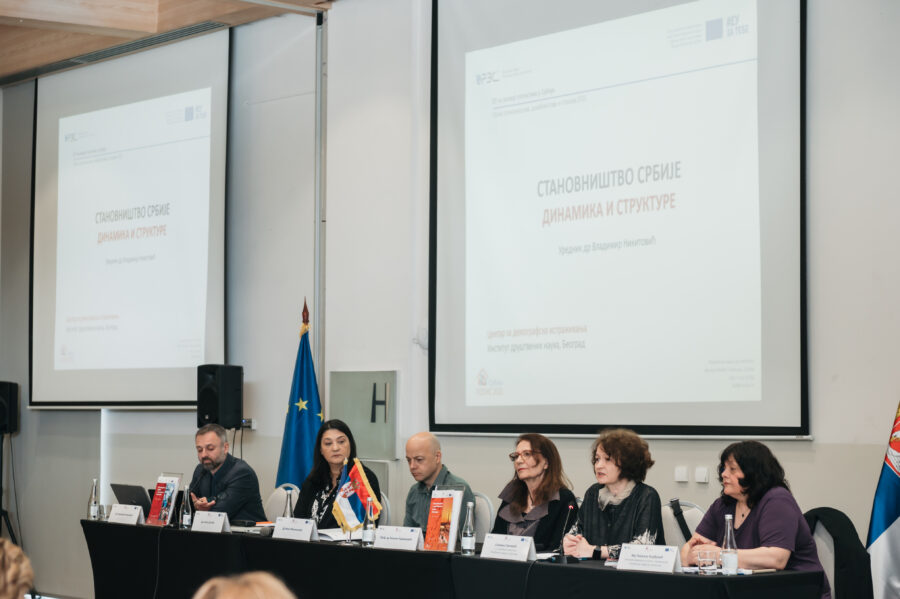As part of the series of thematic studies Census 2022, the Statistical Office of the Republic of Serbia has published on March 28, 2025, a special thematic study entitled “Population of Serbia – Dynamics and Structures”, signed by a six-member team of authors from the Center for Demographic Research of the Institute of Social Sciences, under the leadership of the editor of the study, principal research fellow Dr. Vladimir Nikitović. The study is the result of the project „Production of the Publication regarding characteristics of the population of Serbia, for the Project IPA 2018, Belgrade, Serbia“.
As census data play a significant role in analyzing population changes in Serbia makes this study important given the lack of a statistical population register and a series of demographic, socio-economic and other challenges facing Serbian society. The content is conceived so to bring into particular focus the regional aspects of demographic processes and phenomena, respecting this way a wide social need to understand the identified (sub)regional disparities in the development of the population of our country.
The interdisciplinary geodemographic approach, which involves the use of methods of various scientific disciplines of population science – demography, geography, sociology and economy, has allowed making an integrative study on key demographic changes that happened in Serbia in the last intercensus period (2011-2022). It presents the trends and patterns of demographic phenomena and processes through the analysis of population dynamics, age and sex structure, educational composition, fertility, internal displacements, households’ dynamics, as well as a special group of Serbian citizens living abroad more than a year. It examines the regional and local aspects of recognized trends and patterns, and points out the particularly vulnerable areas of the country.
The findings presented in this book are a noteworthy contribution to better understanding of demographic processes that shape current and future population trends of Serbia, which thus can be useful to researchers and policy-makers in addressing more adequately the challenges facing our society. We have selected some of the most important ones in this summary.

Download the publication (pdf)

